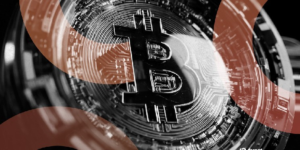Home
Glossary
Algorithmic Market Operations (AMOs)
Algorithmic Market Operations (AMOs) automatically control the supply of algorithmic stablecoins while improving scalability, decentralization, and transparency.
What Is Algorithmic Market Operations (AMOs)?
Unlike Tether — which manually mints or burns to increase or decrease its supply — algorithmic stablecoins automatically rely on algorithmic market operation modules (AMOs) to control supply. These are beneficial to the system as they enable scalability, in addition to enhancing decentralization and transparency.
By providing an AMO solution, a stablecoin is more likely to achieve the growth and size required for adoption. AMOs also remove the need for a centralized team to make in-house decisions, as that task will then lie primarily with smart contracts. In turn, this reduces the risk of human error and manipulation.
Every AMO has four properties:
1. Decollateralization: decreasing the collateral ratio;
2. Market operations: this part of the strategy doesn’t change the collateral ratio;
3. Recollateralization: increasing the collateral ratio;
4. FXS1559: the precise amount of FXS that can be burned and still leave profits above the targeted collateral ratio.
In order to keep the stablecoin “stable,” if its price ever gets above its stable peg, the collateral ratio is lowered, the supply expands as it normally does and the AMO controllers continue to run.
On the other hand, if the collateral ratio becomes so low that the stablecoin loses its peg, the AMO will be able to utilize the predefined recollateralization operation to increase the collateral ratio up again.
Because AMOs can be described as a “mechanism-in-a-box,” it’s possible for anyone to build an AMO, as long as they follow the specifications.
Author:
Kazemian brings a wealth of experience as a leading blockchain entrepreneur and crypto enthusiast, as the co-founder of the blockchain based knowledge base, Everipedia. Kazemian’s crypto journey started at UCLA in 2013 where he began mining crypto in his college dorm room and today is a frequent guest lecturer at UCLA covering crypto, computer science and entrepreneurship.




